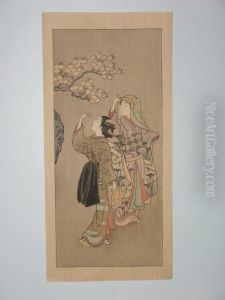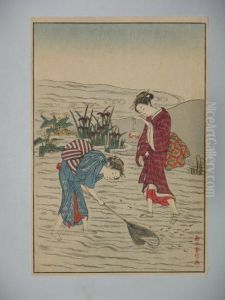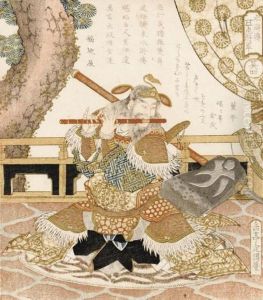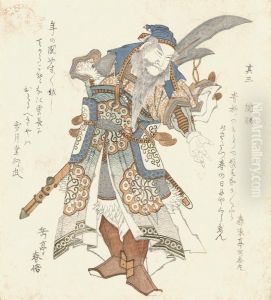Harunobu Gakutei Paintings
Harunobu Gakutei, whose birth name was Saitō Jūbei, was a Japanese ukiyo-e artist known for his contributions to the world of woodblock prints. Born in 1786, Gakutei was active during the late Edo period, a time when Japan was under the rule of the Tokugawa shogunate and the country's culture and arts were flourishing in the relative peace and stability of the time.
Gakutei is particularly noted for his surimono prints, which are a type of Japanese woodblock print that were privately commissioned for special occasions and often featured poetic inscriptions. Surimono prints were typically more lavish and used finer materials and techniques than commercial prints, as they were not produced for the mass market. They were often exchanged among members of literary circles or as New Year's greetings, and Gakutei's works often included kyōka, or humorous poems, reflecting his involvement with literary societies. His affiliation with such societies led him to design prints that not only showcased his artistic skill but also his literary interests.
Gakutei's work is characterized by its elegant and refined style. He was innovative in his technique and compositions, and his prints often portrayed beautiful women, kabuki actors, and scenes from Japanese literature and folklore. His use of color and attention to detail were exceptional, and he is credited with advancing the art of surimono prints alongside his contemporaries such as Hokusai and Hiroshige.
Despite his contributions to Japanese woodblock printing, much of Gakutei's life remains obscure, and there is limited documentation about his personal life and training. It is known that he worked in Osaka for a time before moving to Edo (modern-day Tokyo), where he became a disciple of the artist Utagawa Toyokuni I. This apprenticeship would have greatly influenced his style and technique.
Gakutei continued to produce works until his death in 1868, a significant year in Japanese history as it marks the end of the Edo period and the beginning of the Meiji Restoration, which saw the country rapidly modernize and open up to the West. His legacy lives on through his prints, which continue to be appreciated for their beauty and craftsmanship, and they provide valuable insights into the cultural and artistic practices of his time.



